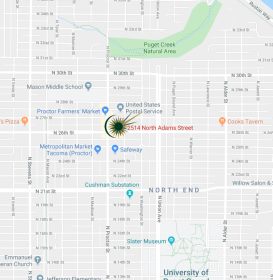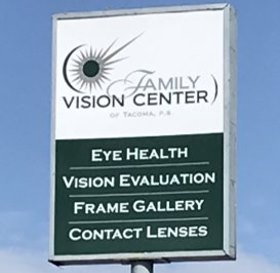Vision Over 60
The more birthdays pass by us, the more we statistically meet with the outcome of our genetics, our major health events, and past lifestyle choices. This causes many people fear and regret, but worse than this is denial. Any of us who examine eyes for a living can tell stories that we share (with a sad tone of voice) about a patient who came in after not having had a routine exam in eight years is discovered to have permanent vision loss from glaucoma or another treatable condition. The saddest stories are when the vision loss was preventable with early diagnosis and treatment. An informed perspective is often the best medicine, so here is a brief summary of things to watch out for when over 60 years old. Following these, there is a general discussion about changes that happen to your eyes after 60.
Incidence of Vision Loss
Here is the ‘bottom line up front’, the ‘worst case scenarios’ we all fear (doctors and patients alike.) To begin with, after generations of research, it has been firmly and repeatedly proven that wearing or not wearing your eyeglasses does not make your eyes better or worse! The thing to be afraid of is underlying disease processes, many of which are entirely without symptoms until later stages when little or nothing can be done to help. Generally speaking, one in six adults over 45 in this country has an eye condition that could threaten their sight. The three most-feared eye conditions for people of all ages are discussed in another more-detailed article in this website’s library called ‘Eye Conditions’, but here I hope to give some statistics and suggestions relevant to ages over 60.
Cataracts are actually the leading cause of blindness in the world, mostly because of a lack of surgical services. With modern surgery, all vision lost to cataract formation is almost always restored. By the age of 80, half of all people in the U.S will either have a cataract or will have had cataract surgery. A cataract is a cloudiness of the eye’s crystalline lens which causes a decrease in vision, (not a growth on the outside of the eye). It is rare that blindness occurs in this country from cataracts, but if they are causing you decreased vision it is best not to wait until they advance to a severe stage. Cataract and lens procedures are the third most common outpatient procedure performed annually in the U.S. (about 6%), with colon procedures being the two more common (about 29% combined). Suffice it to say, cataract surgery is very routine and very safe. Most patients of mine who come back for post-operative care have comfortable eyes, and are very happy with the clarity and quality of their, wondering why they put it off.
Glaucoma is the second most common cause of blindness worldwide. It affects 2.3 million Americans (about 7%) though it is estimated that only about half know they have it. Perhaps the most dangerous thing about glaucoma is that 95% of the time there are no sensations. Between 9-12% of all new cases of blindness are from glaucoma in the U.S. Excessive pressure inside the eye damages the optic nerve, and this is what causes the permanent blindness. Risk factors include being over 60, having family members with glaucoma (especially siblings), being diabetic, being severely nearsighted, and being African American. In fact, it is the leading cause of blindness among African Americans and Hispanics: African Americans have an incidence three times higher than Caucasians, and will go blind four times more often. And between the ages of 45 and 64, the incidence of blindness from glaucoma in African Americans is 15 times that of Caucasians! Be sure to get routine eye exams if this describes you!
Macular Degeneration (AMD) is the leading cause of vision loss for people over 74 in the U.S., with the most common cause being diabetic retinopathy in people ages 20-74. In huge national studies, such as the AREDS studies, nutrition has been shown to slow the progression of AMD, and many smaller studies corroborate the role of supportive nutrition in the prevention of AMD. Smoking is also a major risk factor for AMD, and can also harm your night vision.
Diabetic damage in your retina is an indicator that damage is happening in other places in the body too, so routine diabetic eye exams are very helpful to doctors who manage diabetics. Diabetic Retinopathy is a major risk factor for vision loss in all age groups, but in those over 60 it particularly multiplies other general health conditions. For example, it multiplies the chances of death from heart disease and of having a stroke by two to four times (be sure to visit www.diabetes.org). Diabetes is currently a major topic of study because of its catastrophic effect on people’s lives and on our health care system. The incidence of diabetes has spiked in recent decades, and is very associated with obesity and poor dietary habits. Diabetes is a most common cause of blindness, amputations, kidney failure, cardiovascular disease, and puts one at risk of a long list of other devastating or fatal conditions. Diabetes shortens life, causes great suffering, and is very expensive: make any adjustment in your lifestyle habits to avoid it if you don’t yet have it, and if you are diabetic, treat it with great respect.
Subtle Effects of Aging on the Eye
The effects of aging on the eye we usually think of are the loss of near vision and cataract, but there are little things that creep up on us when we are over 60:
- Peripheral vision is lost by about one to three degrees per decade of life, so that those in their seventh or eighth decade of life have a loss of peripheral visual field of about 20 to 30 degrees. This obviously makes operating a motor vehicle more dangerous, so if you are over 60, be conscious of turning your head to check to the sides rather than relying on the vision ‘out of the corner of your eye.
- Reduced pupil size gradually happens with age, as muscles that control pupil size and reaction to light lose some strength. This causes the pupil to stay smaller and not respond to sudden changes in light level as readily. This is partly why people over 60 need about three times the ambient light level for reading than those in their twenties, and why seniors tend to be more dazzled by sudden changes in light level.
- Color vision is lost because, as we age, we lose nerve cells a little at a time, including those in the retina. In perceiving color, this has a particular impact on the most difficult colors for your vision system to process, the blue end of the spectrum. This makes things look a little more ‘washed out’ than before, and can have an impact on activities which rely on subtle color perception.
- Dry eyes become more common the older we become. This is especially common for women after menopause. A tremendous amount of research is being done on dry eyes, and the complexity of the tears has surprised most researchers. The findings show that dryness is more a matter of tear quality than quantity. In fact, when your tears aren’t working right, your eyes will try to compensate by making more volume. This can occur because the protein coating on the eye's surface is deficient because of inflammation. This is common in autoimmuned disorders. It is most often the case, however, that the oily protective coating on the outside of the tears is deficient. This part is made by the 20 to 30 deep oil glands (called meibomian glands) on the back surface of each lid: the act of blinking is supposed to spread a protective coating on the surface of the tears to protect them from evaporation. When these are clogged, the watery part of the tears evaporates, and often the eyes will try to compensate by releasing more of the watery part, resulting in excessive tearing.
- Vitreous thinning happens also. The vitreous, the jelly-like tissue occupying the center of our eyes, thins in pockets as we age. This allows it to move around more and pull away from the retina, to which it is lightly attached. If it pulls off completely it causes particles to appear to be floating in your vision—appropriately called floaters—and can cause flashes of light if the retina is being pulled on enough. A wide majority of the time this tugging on the retina is only temporary while the vitreous is coming off, and doesn’t cause problems. BUT, on occasion, it can cause a retinal detachment, a blinding condition! If you experience a sudden increase in the number of floaters, and see flashes, you are best off having the inside of your eye looked at immediately just to make sure.
Though every effort has been made to be accurate, all articles contained within this website are for strictly informational purposes, and not to be used as a sole source for healthcare training and instruction. Neither does Family Vision Center of Tacoma, P.S., assume responsibility for actions undertaken by someone using information presented on this website to make healthcare decisions.
Glowing Reviews
We had a very pleasant experience when we saw Dr. Gorham today. Dr. Gorham explained what he was doing throughout the exam and the staff were extremely helpful to my son as he asked questions about glasses. His visit
Jackie
Everyone was great and served me very attentively. Thank you very much for listening to my concerns and helping me all the way from a thorough exam to picking a pair of glasses that work perfectly for me! What a relie
Lorrie, Tacoma
My visit was educational and fun. Dr Gorham took the time to answer any questions I had. The staff were also very helpful and informative and fun. Thanks again.
Shannon, Tacoma
Dr Gorham was a great doctor! I’m always scared to death of people being around my eyes, but I was very comfortable with him. He didn’t make me feel like just another patient. Thanks!
Jennifer, Puyallup
I just want to thank everyone for being so kind and helpful. It’s the first time I have glasses I actually like thanks to the girls at the desk assisting me in my search for frames. You were all wonderful and I
Whitney, Tacoma





